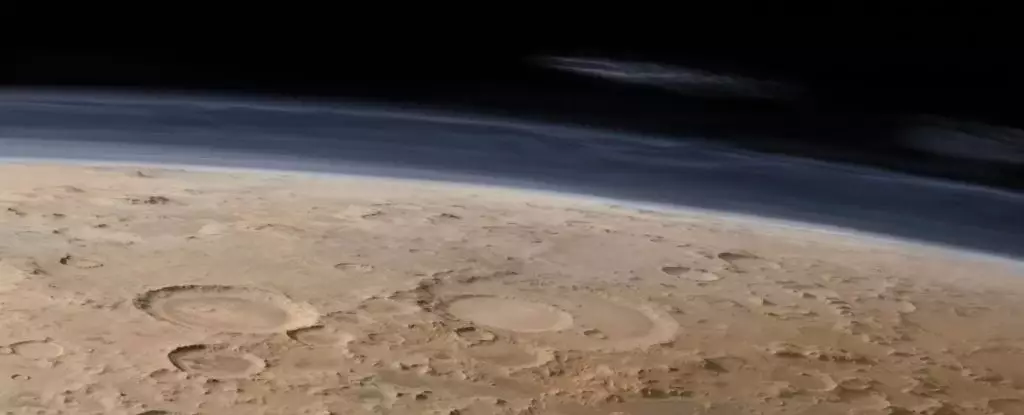The relentless quest to understand Mars—a planet that has captivated human imagination for centuries—has taken a significant leap forward. Recently, a dedicated team of scientists led by Shannon Curry from the University of Colorado Boulder has announced a monumental finding that sheds light on the enigmatic processes behind Mars’ atmospheric erosion. By meticulously analyzing over nine years of satellite data, the researchers have uncovered definitive evidence of atmospheric sputtering, a phenomenon thought to be a key player in the Martian environment’s transformation. This remarkable discovery transforms our understanding of how Mar’s atmosphere—once potentially rich with water—has suffered such extensive loss over geological time.
Atmospheric sputtering is not just a trivial aspect of planetary science; it acts as a window into the historical narrative of Mars, elucidating the potential for habitability in the distant past. As the researchers suggest, their findings significantly advance the operational understanding of atmospheric mechanisms that could offer clues about water’s historical presence on Mars. This not only raises questions about the potential for past life on the planet but also highlights the dynamics of planetary atmospheres throughout the Solar System.
Decoding the Mechanisms of Atmospheric Loss
At the core of this investigation is the process of atmospheric sputtering, where energetic ions, propelled by the solar wind’s electric field, collide with the Martian atmosphere. On a planet that lacks a global magnetic field—a critical shield in shielding against solar radiation—this interaction becomes a catalyst for atmospheric escape. The implications of this process are profound, even drawing parallels to the moment when a meteorite strikes a planetary surface, creating a cascade of particles that then escape into the cosmos.
However, the intricacies involved in observing this sputtering in action are significant. Documenting these events on Mars takes an astute observation strategy, requiring simultaneous tracking of ejected neutral atoms and the influential ions responsible for the sputtering. This dynamic dance also necessitates capturing data from both the day and night sides of Mars, a challenging endeavor that only NASA’s MAVEN (Mars Atmosphere and Volatile Evolution) spacecraft is equipped to handle adequately. The elaborate nature of the data collection illustrates the highly sophisticated methodologies employed in planetary science today.
Significant Findings and Historical Context
The research team focused on argon densities, particularly noting that above an altitude of 350 kilometers, argon levels fluctuate based on the solar wind’s electric field orientation, diverging from lower altitudes where levels remain stable. This phenomenon underlines the essential role of sputtering in shaping the Martian atmosphere. The study reveals an intriguing excess of heavy argon isotopes, highlighting the efficiency and impact of sputtering.
The team’s observations correlate with the activity of a solar storm that reached Mars in January 2016 and showed that sputtering is currently occurring at rates significantly higher than previously predicted—over four times more vigorous than earlier estimations. Such findings not only support the sputtering hypothesis but also paint a vivid picture of an early Solar System where solar behavior was markedly more chaotic and tumultuous. The energetic conditions of such an epoch likely played a vital role in shaping the fate of Mars and its ability to retain an atmosphere conducive to liquid water and lifeforms.
Implications for Mars Exploration and Habitability
The implications of these findings extend far beyond scientific curiosity. Understanding atmospheric sputtering is crucial for future Martian explorations, especially if we are to envision sending humans to the Red Planet one day. These revelations can help inform strategies to mitigate atmospheric loss and sustain potential colonization efforts. They point to not just the destruction of an atmosphere but also its potential resurrection, highlighting the need for comprehensive strategies in planning manned missions.
Shannon Curry and her team have illuminated a crucial chapter in Mars’ evolutionary saga. The profound dynamics of planetary atmospheres and their long-term effects are now clearer, enabling future research to delve deeper into the question: Could life have ever thrived on the Martian surface? As we pursue further answers, the quest for Mars remains an ever-inspiring journey, urging us to re-evaluate our notions of habitability across the cosmos.

